A large part of my research involves the need to stimulate various sensory systems in animals to determine how contaminants impair those systems. Delivering these stimuli (often also called cues) to organisms without the delivery mode itself causing an apparent reaction is a constant battle.
My research question necessitated a cue delivery system that would stimulate the mechanosensory system of a fish, regardless of where that fish was within a tank. Seems simple, right?…now for the complexities: (1) there needs to be minimal disturbance of the water surface, and (2) this needs to be done without human interference to the fish (i.e., the fish can’t see you!).
In order to virtually eliminate human interference, we either had to deliver the stimulus from a far distance, or deliver it from above the lid of the tank. The latter seemed easier (or so I thought), which prompted the “sprinkler system” concept. The issue is that sprinklers disturb the water surface. I was recently reminded of this fact when a fire started in an adjacent lab space, triggering the sprinklers to turn on. The power of those sprinklers was strong enough to knock off tank lids and displace fish from their tanks! With this information, I knew we needed an underwater sprinkler system.
I wanted to know the exact cue volume I would be using, so I looked to an obvious tool that can dispense a known amount of liquid – a syringe. Next, I needed to turn the simple end of a syringe, dispensing a single stream of cue in one direction, into a sprinkler. Syringe in hand, I went to what is arguably the most magical place on earth (sorry, Disney): The Home Depot for inspiration amongst the aisles of materials and tools. For this project, the plumbing section was the jackpot.
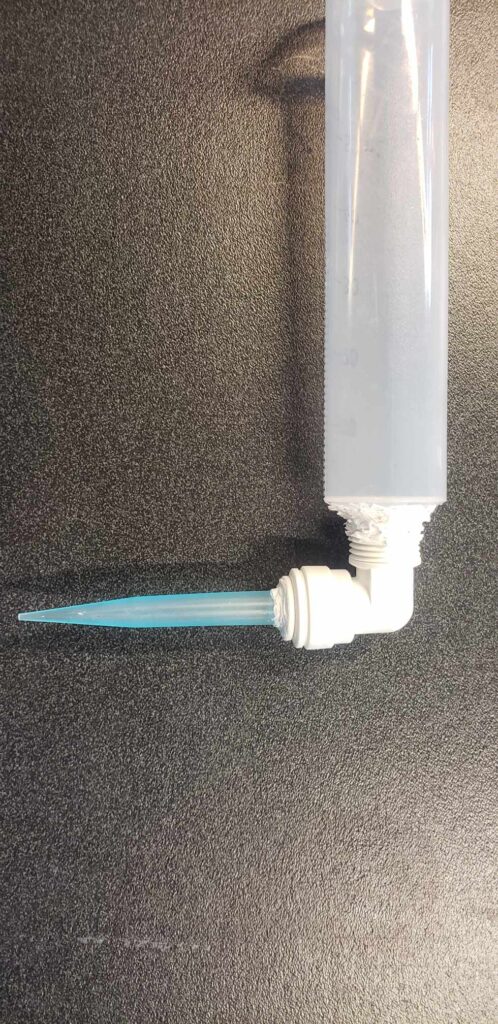
The first prototype did not delve too far from laboratory materials – a right angle quick-connect pipefitting to create a way to direct water into a pipette tip that I made holes in with a hot needle. The problem — this quick-connect was also quick to leak…everywhere.
I considered my daily life and what resembled a sprinkler – a shower head would be far too large but was the right idea. So what is smaller than a shower but performs the same general task? A sink of course…(or so my sleep-deprived brain thought, anyways). What I then realized is that I had no idea how sinks worked. So, I bought the end cap of a faucet and took it apart. Update: useless. But I tried it anyway. I isolated the only layer (apparently called an aerator) that looked like it would disperse water. I realized there was no easy way to secure it directly to the syringe, so we went back into the pipefittings section…
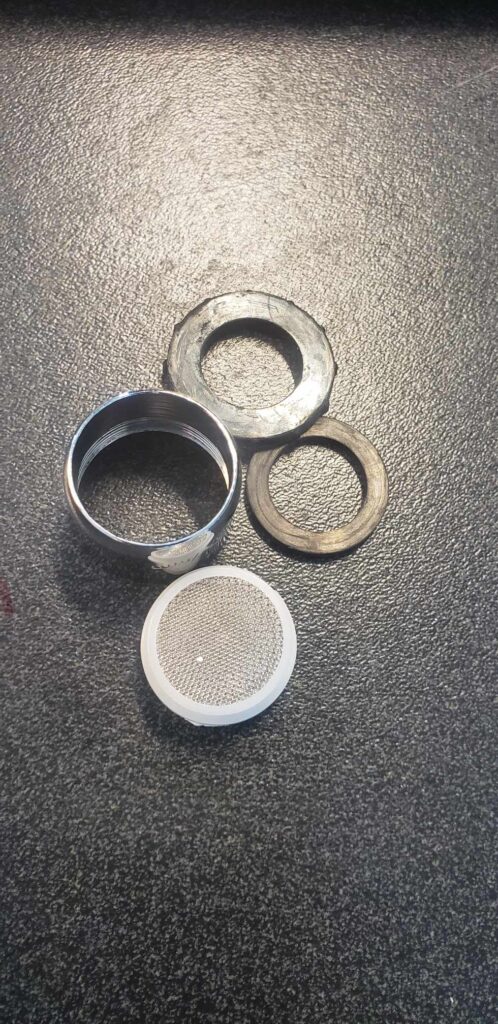
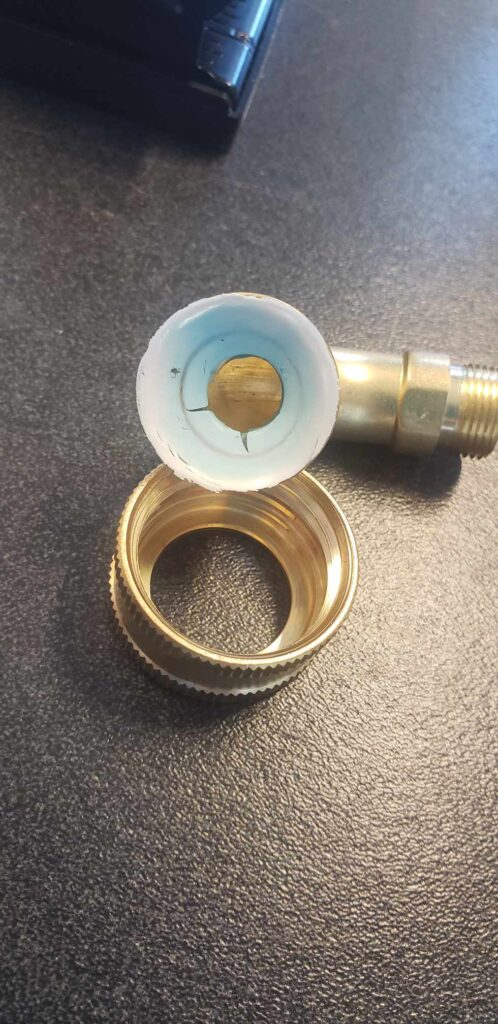
I found this terribly heavy brass elbow that the aerator would fit into that I then thought I could secure to the syringe end, using the same logic of the first elbow pipefitting.
The logic did not hold.
As a metals toxicologist, I should have known brass would not be a suitable material – it was heavy, and it was clearly reacting with something…everything started turning blue, the sealant started cracking. Round 2: fail.
Back to the drawing board (and to Home Depot). I realized I needed something that would secure to the end of the syringe without greatly increasing the volume (and therefore losing pressure) that I could then control the outflow from. We had to get customizing.
I went for a simple plastic elbow that I could cut (with a hack saw — one of the many tools I think every lab needs) and it would simply act as a guide/sleeve for the actual cue vessel: an eyedropper backwards on a syringe (how that idea came to be is proprietary information of my subconscious).
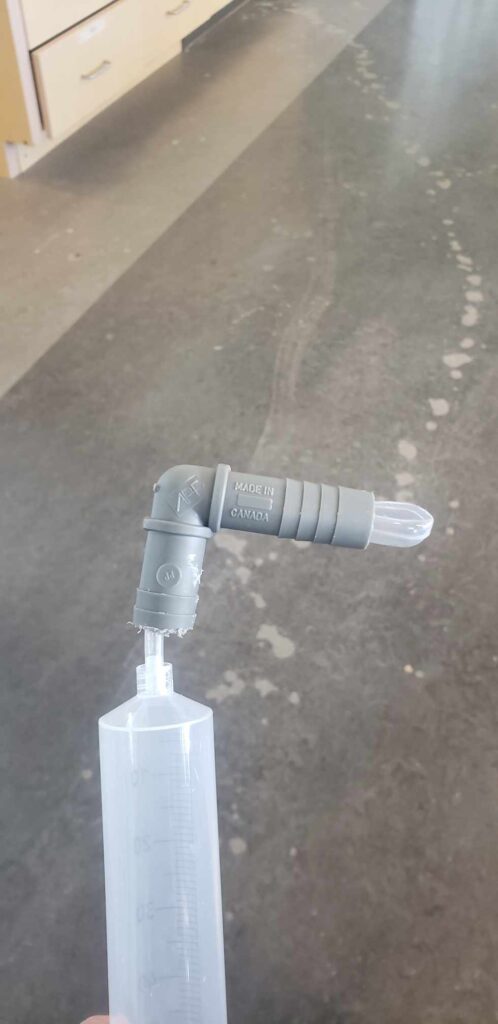
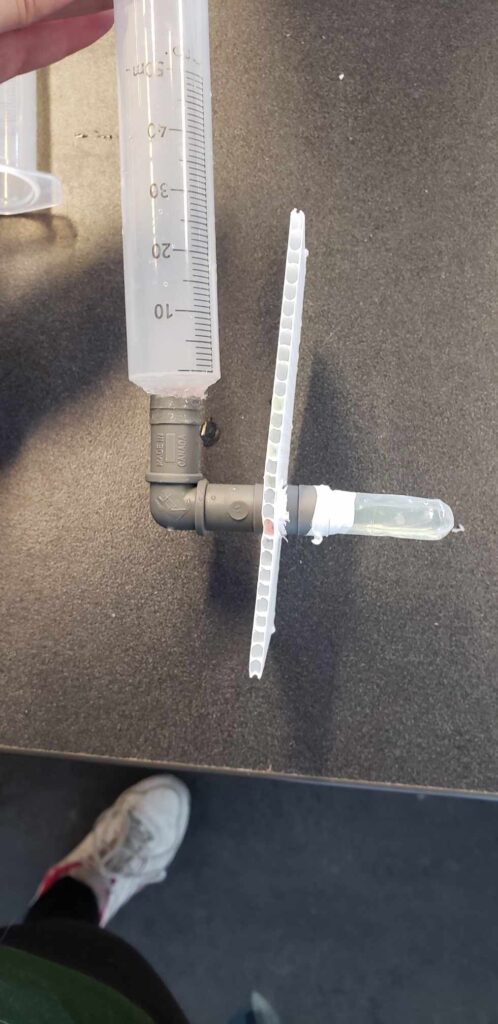
It took days of trial and error to get it just right – figuring out the best way to fill the syringe and poking holes of various configurations into the bulb of the eyedropper to create sufficient coverage so that a fish could not avoid it. Then, I realized the fish would simply swim behind it and avoid everything, so I added an additional layer to prevent those sneaky little fish from foiling my plans. After that, it was on to my next favourite step in the testing process: dye tests.
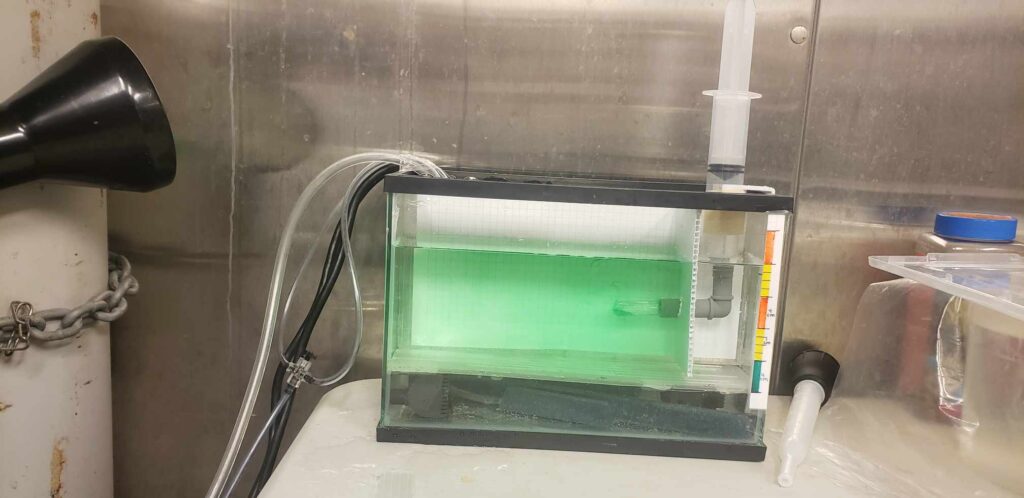
It was looking good!
And just how “sprinklery” was it?
Well, here is an early test…
Pretty sprinklery.
(don’t mind the tape, the sealant was still curing and I was being impatient)